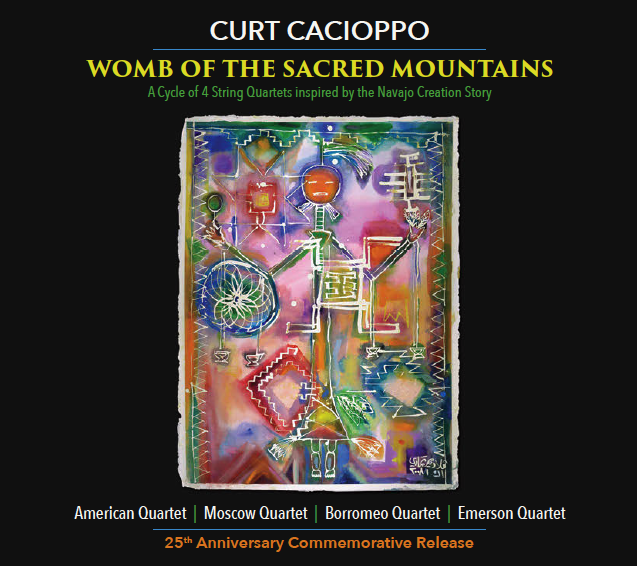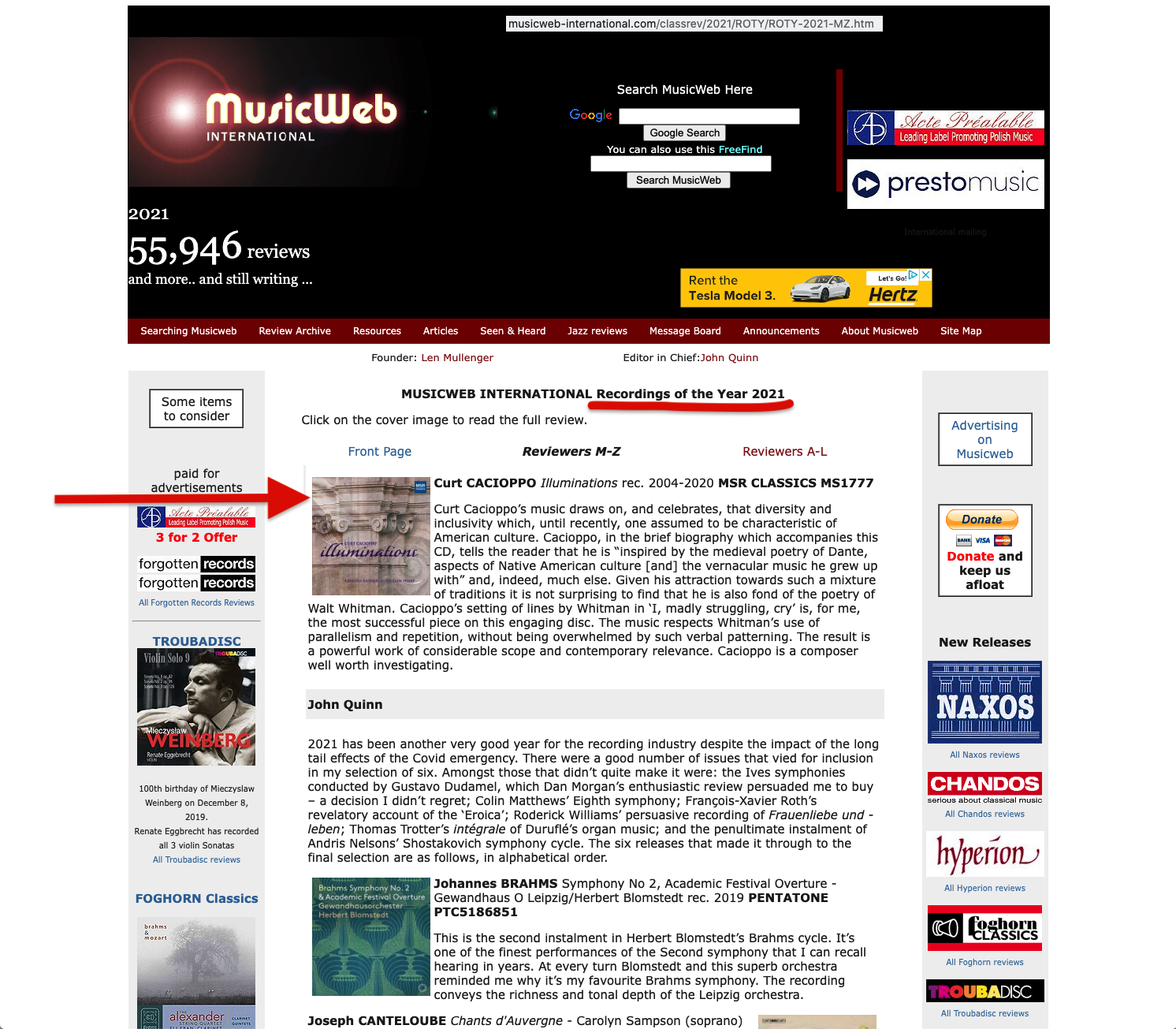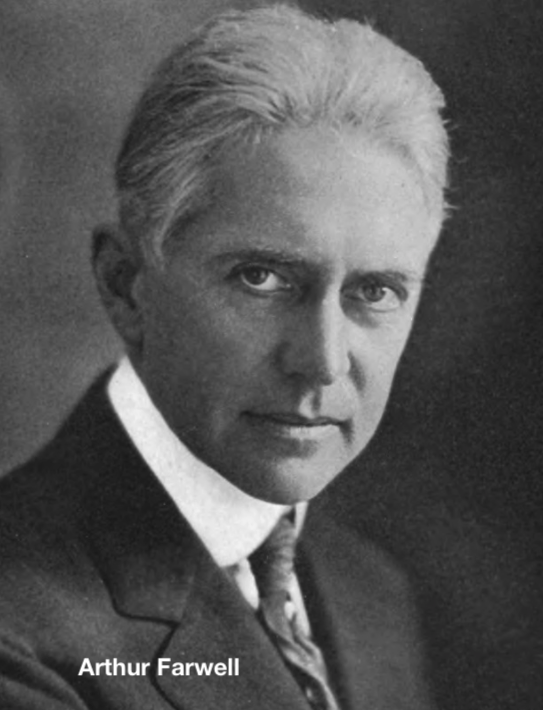Quartetto di Venezia/Cacioppo_ARCHI
May 14th, 2023 · Write Comment · Uncategorized
3 new Shelley settings, for soprano
May 13th, 2023 · Write Comment · Uncategorized
Two Scenes and a Song – Shelley cycle for baritone & piano
August 2nd, 2022 · Write Comment · Uncategorized
WOMB OF THE SACRED MOUNTAINS 25th Anniversary Commemorative Release
February 14th, 2022 · Write Comment · Uncategorized

PURCHASE Womb of the Sacred Mountains
View the TRAILER
FANFARE Sacred Mtns coverage
Sacred Mountains I notes
Sacred Mountains II notes
Sacred Mountains III notes
Sacred Mountains IV notes
Sacred Mountains cover art
Conversation 1 – performing the cycle
Conversation 2 – influences
Conversation 3 – compositional techniques…
Conversation 4 – reception
Pronunciations
ILLUMINATIONS makes MWI’s Recordings of the Year list
December 1st, 2021 · Write Comment · Uncategorized
Arthur Farwell: a composer’s voice reaching to the sky
November 15th, 2021 · Write Comment · Uncategorized
[This short essay in WSJ Life & Arts “Masterpiece” style celebrates the October 22 NAXOS release of a new CD dedicated to American composer Arthur Farwell (1872-1952). Farwell focused the best of his creative energy to bringing Native American music and belief into symbiotic relationship with the means and practices of the Western concert music tradition. Farwell’s dynamic initiative, while proposing new compositional affinities, further sought to validate the indigenous component in American society, cultivating and expressing an American conscience.]
Arthur Farwell: a composer’s voice reaching to the sky
by Curt Cacioppo
Strewn over six decades are some half dozen inclusions of Arthur Farwell’s music on compilation LPs and CDs – a five minute orchestra piece here, a set of songs there, a solo piano piece or two. Such paltry representation and neglect of a figure whose visionary impact on music in the U.S. during his lifetime was felt from coast to coast and in between is nothing short of a mystery. A valiant reading of his Op. 103 Piano Quintet by the Pacifica Quartet and Aileen James came out on MHS in the 1970’s, which the company doesn’t even remember pressing. The much more recently issued 3 volume release of his complete piano music by the Cherokee pianist Lisa Cheryl Thomas made an ambitious move to address this. Now we have a new Naxos recording dedicated exclusively to Farwell’s most important corpus of work, produced in his prime, that resonates reverently, passionately, euphorically to the Native American influences and inspiration essential in his formation. Arthur Farwell: America’s Neglected Composer – Songs, choral and piano works, and the world premiere issue of “The Hako” string quartet, Op. 65 (1923), included in the label’s “American Classics” series, presents seven fascinating pieces in a variety of genres superbly performed by an international roster of the finest interpreters. Compelling liner notes by Joseph Horowitz, founder of the PostClassical Ensemble, which centerpins the project, accompany the album.
Without doubt, The Hako is Farwell’s longest sustained discourse in this vein, and the culmination of his quarter century long search for aesthetic complementation with the indigenous elements that beckoned to him from an early age. This 18 minute continuous narrative, informed by the Hako ceremony of the Pawnee, brings Native liturgy and melos, Western tonality and instrumentation, to common ground. Sonata form bows to the parameters of the ceremony, melodic content is shaped entirely in accordance with tropes and rhythms characteristic to the ceremony’s song repertoire. Farwell’s rhetorical pattern of intimation later manifesting in revelation follows the ceremony’s fundamental interrogative/declarative structure. At the outset, the ku´rahus, or leader of the Hako, incants: “I know not if the voice of man can reach to the sky, I know not if my prayers will truly be heard.” By the end of many days of devout ritual, he is able to exult: “I know now that the voice of man can reach to the sky, I know now that my prayers will truly be heard.”
The ceremony, received by the Pawnee as a gift from the Omaha tribe who originated it, serves multiple ends, among them as an initiation rite for the young, a mechanism for strengthening social solidarity, an entreaty for fruitful multiplication, an opportunity for thanksgiving. It was recorded collaboratively at the previous turn of century by Chaui Pawnee ku´rahus Tahirŭssawichi, James R. Murie (also Pawnee), and ethnographer Alice C. Fletcher. Edwin Tracy carried out the transcription of its more than 100 songs, which were graphophone recorded. The name of the ceremony embodies all of its components – vestments and paraphernalia, symbolic gesture and image, textual volume roughly equivalent to the combined linear content of the first and fourth Gospels, as well as music – and further implies the power of all of them “to speak.” The enactment unfolds in 20 core rituals grouped into 4 divisions.
In his Op. 65, Farwell surpasses all previous efforts, including his own, at attempting such cross-cultural coalescence. The process and result seem sui generis until we encounter, a generation later, a Native composer who conversely embraced Western musical tradition: Louis Ballard (1931-2007). Ballard, part Quapaw and part Cherokee, was descended from chiefs on both sides of his family, and grew up learning the cultural practices of his people. At the same time, he pursued a musical path of study at the University of Tulsa with Béla Rózsa, and a career that took him to New York City and the celebrated capitals of Europe. Louis felt himself at once an avowed post-Schoenbergian and thoroughly Indian. Ultimately he said, pointing to one of his scores, “This is not Native American music or any type of music other than ‘Louis Ballard music.’” Now that we are finally able to hear and take measure of Farwell’s Hako quartet, and reflect upon its genesis and intent, it becomes clear what exact counterparts he and Ballard are in historical relation to each other, each searching for synthesis, each writing his music, each shining a light toward compositional advancement. The parallel conjures up the Hopi twins at the North and South poles, who keep the planet rotating. Each composer takes the cultural inheritance bequeathed and entrusted to him and pools it with resources of the other in an effort to define his individual artistic identity, consequently widening and enriching the art.

The Dakota String Quartet outside the National Museum of the American Indian in Washington, D.C., on the occasion of their world premiere Naxos recording of Farwell’s most consequential work, The Hako. (Photo courtesy of the South Dakota Symphony Orchestra)
NARAS voting members, 64th Grammy® Awards – FYC
August 31st, 2021 · Write Comment · Uncategorized

Album on Spotify
Album on Apple Music
Track 7 with scrolling text
Critical response to ILLUMINATIONS
‘like Leonard Bernstein, [Cacioppo is] another American composer of controlled eclecticism’
‘a composer with such a fertile musical imagination, given to a kind of Whitman-like inclusiveness’
‘potency…wealth of wit and invention…spectacularly clever’
‘potent…thought-provoking poetics’
‘The performances are gripping and compelling.’
‘an intense listening experience’
and to the sonic mural “(I, MADLY STRUGGLING, CRY)” – Track 7
‘a majestic setting of Whitman’s poem in praise of the broad heterogeneity and equanimity of the United States of America.’
‘a captivating sonic mural’
‘This composition awakens in our minds the political debate raging in the nation today, but transformed in more positive terms.’
‘a powerful work… It invites readings of expressive opposition to Trumpian attitudes.’
‘This work is an affirmation why many of our ancestors along with some of our neighbors and friends came to the United States, and why others also seek to immigrate.’
‘In its passion and intensity of thought and feeling alike, this work synthesizes, very powerfully, words and music, ideals and fears, past and present.’
Sources: MusicWeb International, American Record Guide, Cherry Grove Reviews, The Georgetowner
A gift of music for the Biden’s
February 8th, 2021 · Write Comment · Uncategorized
Just after the inauguration of our 46th president, it saddened me that because of the pandemic, there would be no White House ball. Until there is, I thought it might be nice to offer the Biden’s some sort of dance number for their enjoyment, and so composed the present TANGO for Joe and Jill. To personalize it, the tunes spell their names, and in Dr. Jill’s case, those of her ancestral family and town of origin in Sicily (being of Sicilian extraction myself). To hear Paul Orgel’s performance, click here. Evviva!
ROCHBERG dedication remastered
September 26th, 2019 · Write Comment · Uncategorized
Cacioppo’s monument to George Rochberg is now available for listening on YouTube at https://youtu.be/MRfPPkZvOc8
CURT CACIOPPO
Ciclo metamorfico sul nome d’un maestro (1988)
Metamorphic cycle on the name of a master
Curt Cacioppo, pianist (world premiere performance)
Bösendorfer Imperial #29041
Lawrence H. Fornaci, piano technician
LIVE at Marshall Auditorium, Haverford College, 10/22/88
Jeanne Velonis, audio post-production
Part One
Getreidegasse Nr. 9 0 – 1.49
Lo studio 1:50 – 3:25
Apparition 3:26 – 4:40
The Absolutist 4:41 – 6:46
Scena appassionata e pastorale 6:47 – 9:53
Amusement 9:54 – 11:19
Reflection 11:20 – 13:47
Part Two
Sarbaggiu 13:48 – 22:41
Bagatelle 22:42 – 25:24
America: a prayer 25:25 – 31:50
Finale: Rondino 39:51 – 42:38
Ciclo metamorfico began as a greeting to George Rochberg on the occasion of his 70th birthday. The work ultimately expanded into a two-part cycle of eleven pieces. Perpetual metamorphosis and transfiguration of opening thematic materials into contrasting musical characters prompted the extenuation.
Using a polyglot solmisation alphabet, the theme stated at the outset of the first piece spells in musical notes the name George Rochberg. The tune is set in a Mozartean texture, Alberti accompaniment and all, because I first started thinking about what to do with it when visiting the house in Salzburg where Mozart was born, Getreidegasse Nr. 9 (the cycle reflects much of my travels through Austria, Germany, Italy and Sicily in 1986-87). The curious spelling of George’s name into a simple C-major melody with classical accompaniment makes an appropriate allusion to his (and my own) belief in establishing and maintaining a living connection with the past. By the end of the first piece, the Mozart tune literally turns into a motif from Rochberg’s Serenata d’estate. We segue into the second piece.
“Lo studio,” a little scenario full of puns, depicts George in his workroom on the verge of producing the opening theme of his Partita Variations. The previous Serenata motif turns into a Beethoven bagatelle theme, effects and strains from the Leonore Overture No. 3 and the Quartet in C#-minor enter in, and an amorphicization of a Hammerklavier interlude eventually formalizes itself into the explosive motto of the Partita Variations. The piece ends quietly, punctuated by the famous motif from Beethoven’s Op. 111. (It was, of course, George’s adoption of Beethoven’s style in sections of his early tonal-atonal mixed language pieces that called to my love of Beethoven and drew us into acquaintance.)
“Apparition” represents the sparse disembodiment of the Alberti accompaniment to the Getreidegasse theme.
“The Absolutist” is another scenario. An argument takes place between the declamatory and insistent material of the beginning (I always admired George for being able to come up with this kind of theme), and a quicker, more nondescript type of material characteristic of convoluted serial textures of the 50’s and 60’s that George ferociously railed against.
“Scena appassionata e pastorale” begins with a romantic outburst recalling the mood of one of Rochberg’s Four Short Sonatas. The tranquil middle section uses as a melody the inversion of the name theme.
“Amusement” was written on carnival day in the small Tuscan town of Loro Ciufenna, Italy, where I was living with my family during my leave. “Reflection” recalls the C-major melody in a slow, mystical way. Shimmering arpeggios on chromatic chords evoke the silver-green glistening of olive branches in the sunlight, over which the call of a bird typical to Tuscany is heard. This marks the end of the first part.
The four pieces comprising the second part of the cycle are each of larger scope. “Sarbaggiu” is Sicilian – actually Palermo dialect – for “savage.” The piece is in a fast-slow-fast form. The outer sections, in a violent b-minor, quote here and there the opening motif of Rochberg’s Second Symphony. Vendors’ cries from Sicily and Naples, and a festival fanfare from Arezzo, also make their way into the contrapuntal texture. The slow section comes out of my sweet-sad reaction to atmospheres in Sicily, and bears kinship to the “Nocturne” – by Giacomo Leopardi – “of a wandering shepherd.”
“Bagatelle,” in a reserved way, plays with extremes of register and pedal sonorities. “America: a prayer” I began in Italy and completed in the United States. After some months away in Italy, I started to view my country very differently. I lamented its offenses, and began to pray for cultivation of its attributes, and for our evolution into an ever more generous people of peace. In the middle section of the piece, a motif representing the eagle, our national symbol, calls out that we use our power and resources wisely, for the good of all, for the good of the earth.
The finale, “Rondino,” is really a sonata form with double coda. However, the title signifies that, for the most part, the expression is to be light, like in a little rondo. The C-major Mozartean material returns in 6/8 meter to form the theme. The image is again Austrian – one hears the church bells of Salzburg, the rhythm of the waltz. The development section poses one ornery problem – the obstinate repetition of a series of loud b-flat octaves. Initially there were seven – one for each decade George has lived. Eventually, they added up to thirteen, which is a lucky number in Italy – a way of toasting “cent’ anni” (live for a hundered years!) to George. The first coda launches into a rapid 3/4 meter. A phrase from Mozart’s Jupiter Symphony is inserted, and the music intensifies its joyful feeling. Here I desired to build up something almost euphoric. (The melody unit reiterating here echoes a „Glück auf!” hymn from the Goslar area in the Harz, West Germany). The climax spills into a recurrence of the appassionata phrase of the fifth piece, and from here a second coda – a long diminuendo – ensues. As in the seventh piece, the C-major theme finds a more reflective, mystical expression. The work finishes with two deep, pianissimo chords.
— Curt Cacioppo
(notes from the world premiere performance program October 22, 1988)
PIANO VARIATIONS notes & download
January 31st, 2017 · Write Comment · Uncategorized
My PIANO VARIATIONS on Hail to the Chief act to affirm and to celebrate our country’s diversity and its people. It is truly “for ALL Americans,” and represents many constituencies. A blustery fanfare and flourish announce the Theme (already varied, as it finds itself in a heckled quodlibet framework). Variation I (“Arabesques”), acknowledges the Islamic American community. Variation II (“Phelonious Blues”) pays homage to the African American community. Variation III (“¡Nunca pagaremos!”) represents the Latin American, and particularly Mexican, community. Variation IV (“Rock Solid”) is in solidarity with the Standing Rock Sioux, and is dedicated to Native Americans throughout the hemisphere. Variation V (“Tarantella”), for the left hand, honors Americans with disabilities. Variation VI (“Stronger Together”) represents the Asian American community, and incorporates a part for the page turner (hence the invocation of the campaign slogan as title). Variation VII („Träumerei”) is based on a motif derived from the letters LGBT. Variation VIII (“Daughters of Freedom”) amplifies the Women’s Suffrage song of the same title. The Finale (“Tear down this wall!”) bears the indication Marcia putinesca, and expresses some of my feelings about the United States’ relationship with the international community. Privately I had a very distinct program in mind when planning and executing the work, but there is much opportunity for alternative reading and reading-in. As absolute music, the piece is virtuosic and emotional — at times wry and ironic, at other times perturbed and passionate. Along with other works of mine in this vein, such as America: a prayer and Three American Fantasies, it ultimately reflects a sense of patriotism as deeply rooted as it is complicated.
The score is available for perusal and download by clicking here: Cacioppo Piano Variations.


